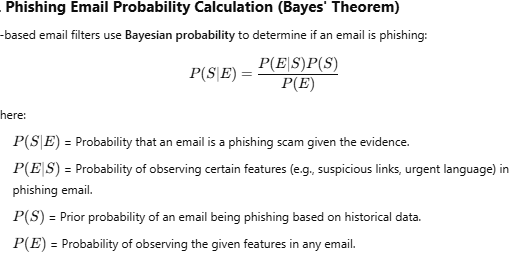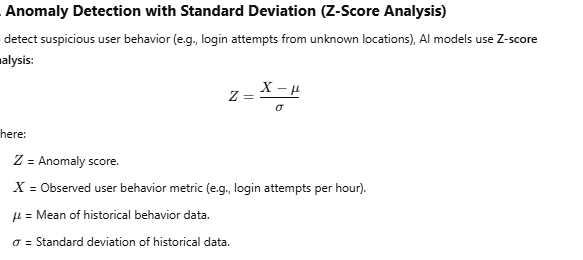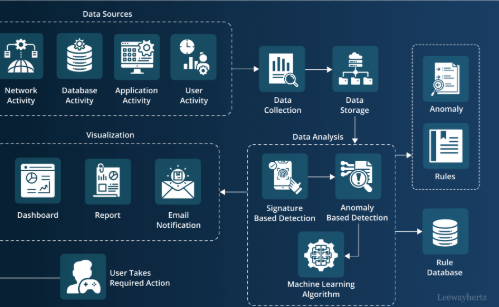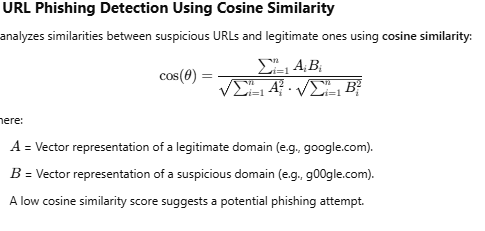Using AI to Predict and Mitigate Phishing Attacks in Real Time
 Phanish Lakkarasu
Phanish Lakkarasu
Introduction
Phishing attacks remain one of the most prevalent and damaging cyber threats, targeting individuals and organizations worldwide. These attacks use deceptive emails, websites, and messages to trick users into revealing sensitive information such as login credentials, financial details, and personal data. Traditional security measures, such as spam filters and blacklists, struggle to keep up with the evolving tactics of cybercriminals. However, Artificial Intelligence (AI) is revolutionizing phishing detection and mitigation by enabling real-time threat identification and response. This article explores how AI can predict and mitigate phishing attacks in real time, enhancing cybersecurity resilience.
The Growing Threat of Phishing Attacks
Phishing attacks have evolved in sophistication, making them harder to detect through conventional security tools. Some common types include:
Email Phishing: Fraudulent emails impersonate trusted entities to steal login credentials or financial information.
Spear Phishing: Targeted attacks on specific individuals or organizations using personalized messages.
Whaling Attacks: High-profile phishing attacks targeting executives or senior employees.
Smishing and Vishing: Phishing attempts via SMS (smishing) or voice calls (vishing).
Clone Phishing: Attackers duplicate legitimate emails and replace links with malicious ones.
Given the scale and complexity of these attacks, AI-based approaches provide a promising solution to detect and mitigate threats in real time.

How AI Predicts and Mitigates Phishing Attacks
AI leverages machine learning (ML), natural language processing (NLP), and behavioral analytics to analyze emails, URLs, and user behavior patterns. Below are key AI-driven techniques used in phishing detection and prevention:
1. Email Content Analysis with Natural Language Processing (NLP)
AI-powered email security systems analyze the content of incoming messages using NLP techniques to detect phishing attempts. These systems:
Identify suspicious keywords and phrases commonly used in phishing emails (e.g., "urgent action required").
Detect anomalies in email headers, sender addresses, and writing styles.
Compare email content with known phishing databases to recognize malicious patterns.

2. Real-Time URL and Domain Analysis
Phishing websites often use deceptive domain names that resemble legitimate websites. AI-driven security solutions use:
Domain similarity analysis to detect typosquatting (e.g., "g00gle.com" instead of "google.com").
Machine learning classifiers to assess domain reputation and flag malicious links.
Real-time link analysis to scan embedded URLs before a user clicks on them.
3. Behavioral Analysis and Anomaly Detection
AI models track user behavior patterns and detect anomalies that may indicate phishing attempts. Examples include:
Unusual login attempts from unknown locations.
Sudden changes in email communication behavior.
High volumes of emails sent to external recipients with suspicious attachments.
By continuously learning from user activities, AI can identify and flag abnormal behaviors in real time.
4. Automated Threat Intelligence and Machine Learning
AI-powered cybersecurity platforms integrate global threat intelligence feeds, allowing them to:
Stay updated on the latest phishing attack trends.
Share and analyze threat data across multiple organizations.
Adapt security protocols based on evolving phishing tactics.

5. AI-Driven Email Filtering and Sandboxing
AI enhances email security by:
Classifying incoming messages using ML algorithms to distinguish between safe and malicious emails.
Quarantining suspicious emails in a sandbox environment for further analysis.
Blocking phishing emails before they reach users’ inboxes.

Benefits of AI in Phishing Prevention
AI-powered phishing detection and mitigation offer several advantages over traditional methods:
Real-Time Threat Detection: AI can identify and block phishing attempts before users interact with malicious content.
Improved Accuracy: AI reduces false positives by distinguishing between legitimate and fraudulent emails more effectively.
Scalability: AI-driven security solutions can analyze vast amounts of data across multiple endpoints simultaneously.
Continuous Learning: AI adapts to new phishing tactics through ongoing training, improving detection rates over time.
Reduced Human Error: AI assists employees by highlighting suspicious emails and reducing the chances of falling for phishing scams.

Challenges of AI in Phishing Mitigation
Despite its strengths, AI-driven phishing detection faces some challenges:
Adversarial Attacks on AI Models: Cybercriminals attempt to bypass AI detection by altering email content and domain structures.
Dependence on High-Quality Data: AI models require extensive training data to accurately identify phishing attempts.
False Positives and False Negatives: While AI reduces errors, it may still occasionally misclassify emails, requiring human intervention.
Integration Complexity: Implementing AI-driven security solutions requires seamless integration with existing cybersecurity infrastructure.
The Future of AI in Phishing Defense
The future of AI-driven phishing prevention looks promising, with advancements expected in:
Deep Learning for Enhanced Threat Detection: More sophisticated AI models will improve phishing detection accuracy.
AI-Powered Personalized Security Training: AI will create tailored security awareness programs to educate users on recognizing phishing attempts.
Blockchain and AI Integration: Blockchain technology will enhance email authentication and verification, reducing phishing risks.
Federated Learning in Cybersecurity: AI models will learn from decentralized data sources while maintaining user privacy.

Conclusion
AI is playing a crucial role in predicting and mitigating phishing attacks in real time. By leveraging machine learning, NLP, and behavioral analytics, AI-powered solutions can detect suspicious emails, analyze URLs, and prevent phishing attempts before they cause harm. While AI significantly enhances phishing detection, human vigilance remains essential in recognizing and avoiding social engineering tactics. Organizations that implement AI-driven phishing defense strategies will be better equipped to combat the ever-evolving landscape of cyber threats.
Subscribe to my newsletter
Read articles from Phanish Lakkarasu directly inside your inbox. Subscribe to the newsletter, and don't miss out.
Written by
